Leopard sharks are one of the more commonly seen shark species in temperate waters along the coast of California. Often spotted drifting lazily along the ocean floor, these small sharks have several attractive physical traits – none more recognizable than their distinctive teeth. Let’s look closer at the dentition of leopard sharks and what makes their teeth so unique.
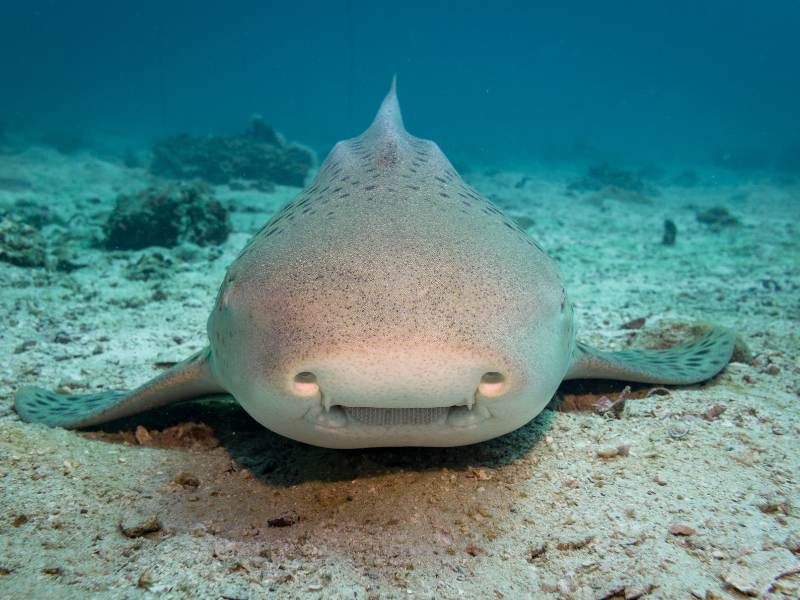
An Overlapping Ridge of Teeth
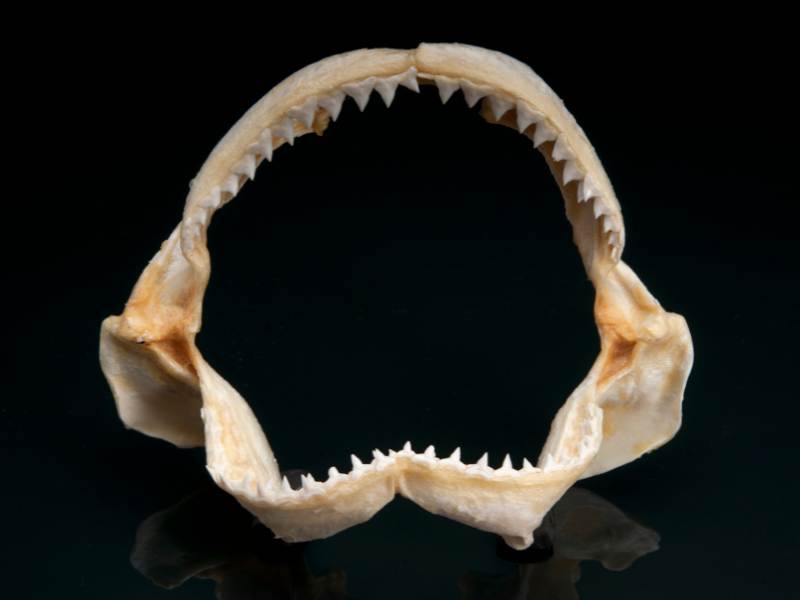
Leopard sharks possess between 41 to 55 teeth in their upper jaw and 34 to 45 in their lower jaw [[1]]. However, what’s particularly notable about leopard shark teeth is their formation.
Rather than being situated in single rows like many other sharks, leopard shark teeth develop in replacement sets that generate overlapping ridges between tooth rows [[2]]. This results in a significantly flattened and ridged surface on their upper and lower jaws, leading them to be aptly termed “pavement-toothed” sharks.
The Latin name for leopard sharks, ‘Triakis semifasciata,’ provides insight into their teeth. ‘Triakis’ means “three-pointed,” referencing the triangular shape of their teeth [[3]]. When examined microscopically, each tooth has a sharp central cusp flanked by two smaller cusps, creating their distinctive tooth morphology. These overlapping ridges of multi-cusped teeth form an almost continuous cutting surface.
Adaptation for Filter Feeding

So, what purpose does this unique dentition serve? The overlapping teeth are an adaptation that allows leopard sharks to filter feed near the ocean bottom efficiently. They use suction to draw in mouthfuls of sediment, filtering out small crustaceans, worms, mollusks, and fish eggs trapped amongst the sand and gravel [[4]].
The flat, ridged surface created by overlapping replacement sets acts like a sieve, capturing even the most miniature prey items while expelling waste material.
As young leopard sharks mature, their diet transitions from primarily invertebrates like crabs and polychaete worms to incorporate more small fish and squid [[5]]. However, their dentition remains optimized for their benthic lifestyle.
Rather than developing teeth for grasping or tearing prey, leopard sharks leverage their pavement-like jaws and “raking” tooth ridges to capture tiny crustaceans and sustain themselves on the seafloor.
Related Posts: La Jolla Leopard Sharks Adventure
Unique Among Their Close Relatives
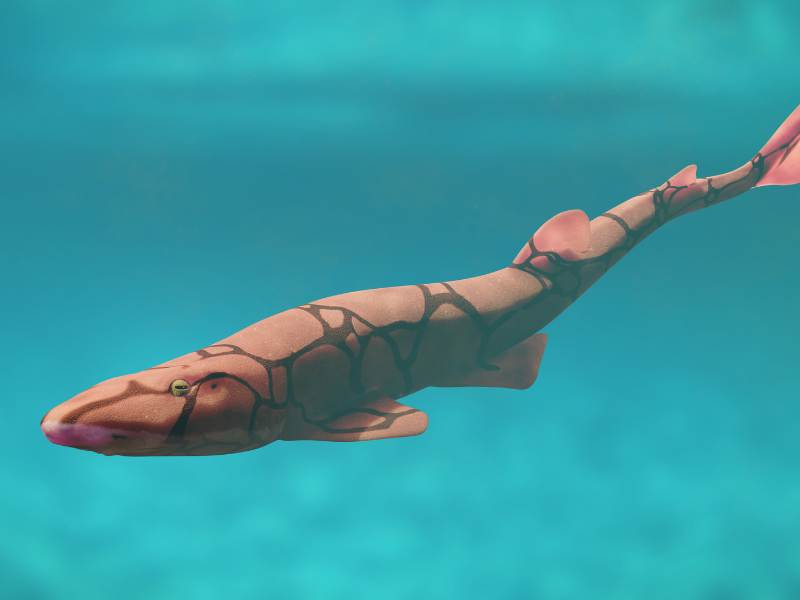
While related species like smoothhound sharks and catsharks possess similar pavement-like dental morphology, no other sharks have developed the extreme ridge and overlap pattern seen in leopard sharks [[6]].
When comparing sections of leopard shark and other carcharhiniform shark jaws under scanning electron microscopy, it’s clear how uniquely adapted their dentition is [[7]]. More than just an exciting characteristic, the dental organization of leopard sharks represents a significant ecological specialization.
Learning More About Leopard Shark Teeth
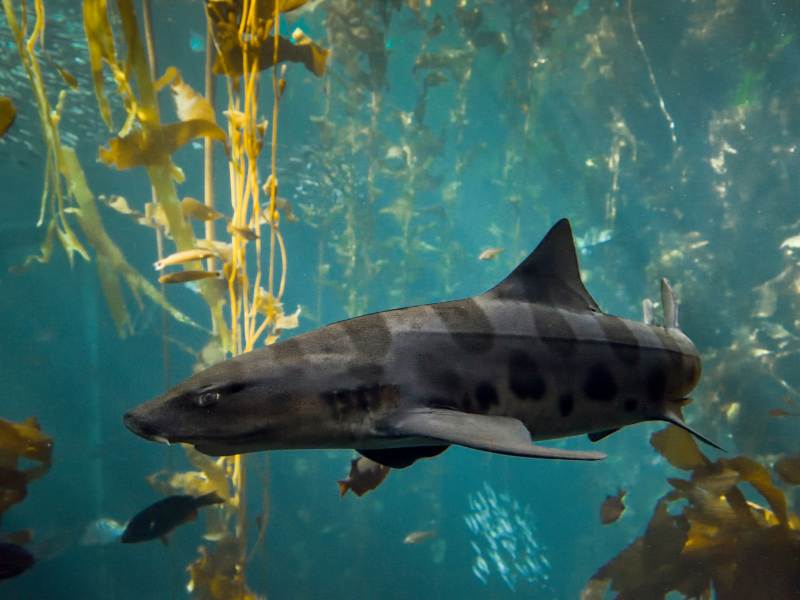
Suppose you can observe a leopard shark up close, such as at aquariums like the Birch Aquarium at Scripps or the Monterey Bay Aquarium. Could you take a moment to examine their jaws? You’ll quickly see the myriad of tiny, triangular teeth forming the pavement-like ridges.
Understanding adaptations like leopard shark teeth gives insights into how different species evolve to exploit available resources efficiently. Their unique dentition is just one of the fantastic traits that allows these small sharks to thrive along the California coast.
Summary
In conclusion, the overlapping ridges of small, triangular teeth possessed by leopard sharks represent a specialized adaptation for filter feeding along the seafloor. Their pavement-like jaws form an efficient sieve for capturing tiny crustaceans and sustain them on their predominantly invertebrate-based diet.
While related to other sharks, no other species has taken this dental morphology quite as far, underscoring leopard sharks’ position as ecological specialists in the nearshore waters they inhabit. Observing leopard shark teeth up close offers a fascinating view of nature’s ingenuity.
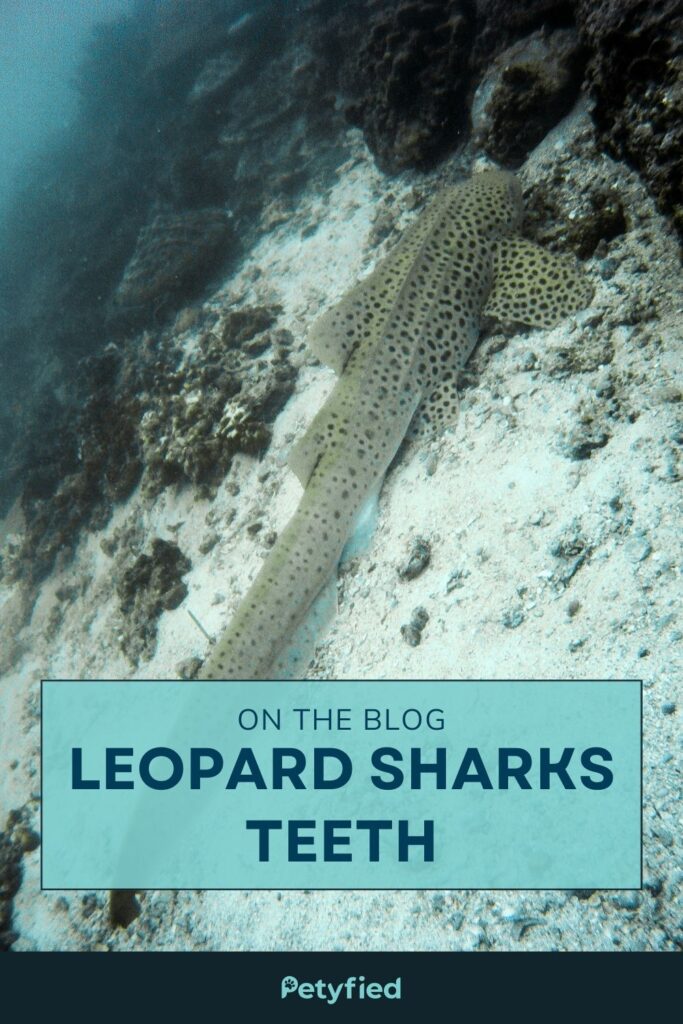
References
- K. Haber, N. Sullivan, M. Motta. 2012. Evidence for razored teeth in a filter-feeding elasmobranch. Journal of Morphology. 273(10):1121–1131.
- P. J. Motta. 2004. Dental variability and feeding ecology of the lemon shark Negaprion brevirostris. Journal of Zoology. 263(4):341–353.
- N. Vennemann. 2001. Oxygen isotopic composition of modern shark teeth and implications for the interpretation of oxygen isotope ratios in fossil shark tooth enameloid. Palaeogeography, Palaeoclimatology, Palaeoecology. 172(1-2):129-136.
- S. L. Gruber, J. A. Nelson & J. F. Morrissey. 1988. Patterns of Activity and Space Utilization of Lemons Sharks, Negaprion brevirostris, in a Shallow Bahamian Lagoon. Bulletin of Marine Science. 43(1):61-76.
- D. Ebert, W. D. Sulikowski. 2007. Biology of Skates. In Lamilla, J.; Lucifora, L.O.; Findley, L.T. (eds). Biology of Sharks and their Relatives. Boca Raton: CRC Press.
- S. C. Lira, J. Q. Bazzoli, V. L. S. Valença. 2020. Dental morphology of the “fangtooth houndshark” Ixhthys zonei (Chondrichthyes, Carcharhiniformes): insights into its feeding biology. Zoologischer Anzeiger. 285:60–67.
- P. J. Motta. 2001. Functional Morphology of the Feeding Apparatus, Diet and Prey Capture in Elasmobranchs. In: Hamlett, W.C. (Ed.), Sharks, Skates and Rays. Johns Hopkins University Press, Baltimore, pp. 164-181.
